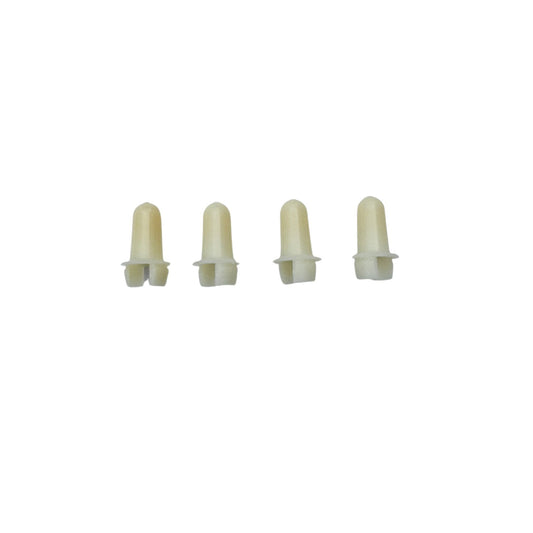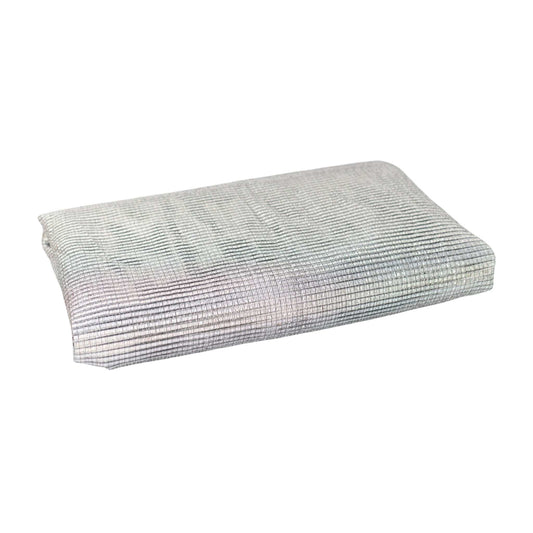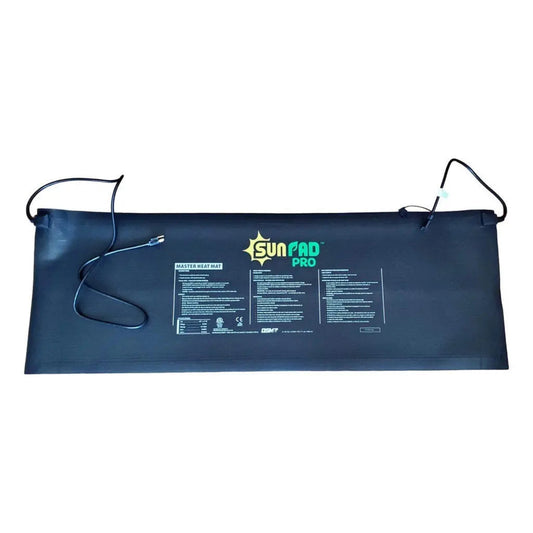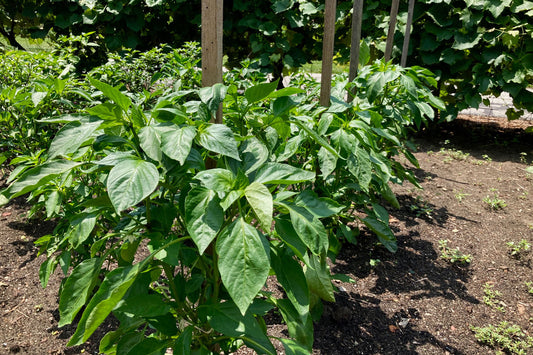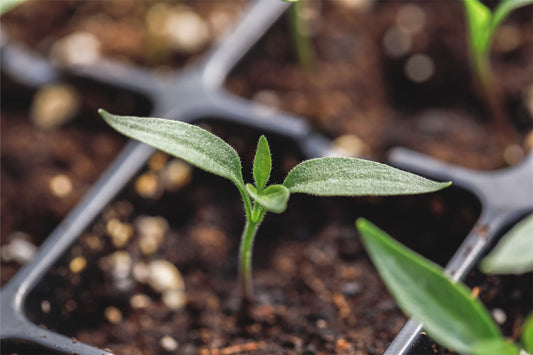While some bugs may benefit the ecosystem, they can also wreak havoc on your pepper plants, undoing all your hard work. The most common pests that can damage your peppers are aphids and spider mites. These insects can stunt growth and even kill your plants, so it's crucial to keep them far away.
If you're currently dealing with these pests, it's essential to act quickly. Regularly inspecting your plants and addressing issues promptly can prevent the pests from spreading, which makes them harder to eliminate.
To help you keep your pepper plants safe, we've compiled a few tips on how to identify and eradicate these pests before they become a major problem. Check out our video above for more detailed guidance on protecting your pepper plants from bugs.
Aphids – Small, Soft Bodied Jerk Faces


These troublesome pests, characterized by long antennae and short cornicles extending from their rear, are typically found on the underside of leaves, stems, and new growth. Aphids come in various shapes, sizes, and colors, making them difficult to identify, especially when they lay eggs. They often hide their eggs on the underside of leaves, but you can spot them by using a light or the sun to cast shadows of the bugs. In addition to eggs, aphids travel in large, hard-to-see groups, making them easy to overlook.
We highly recommend vigilant monitoring for these pests, particularly winged aphids. These pests can fly to new plants or sections of your garden, spreading the infestation further. It's especially frustrating when a pest we dislike gains the ability to fly, right?
What Damage Can Aphids Cause, and What Can You Do?
Aphids attack plants by sucking out the nutrient-rich sap from the leaves, often leaving dark spots behind. This sap loss can stunt plant growth and even kill your plants. Here are some tips to combat these pests when you spot them:
- Manual Removal: Squish aphids with your fingers when you see them, but be prepared to find more. Remove and discard infected leaves in a safe location away from your garden.
- Water Blast: Use a hose to wash your plants, temporarily removing aphids. This won’t kill them, but it gives you time to take more permanent measures. Be cautious with water pressure, especially on young plants, to avoid damage.
In addition to these methods, we recommend a few treatments to effectively get rid of aphids:
- Soapy Water Solution: A simple and effective homemade remedy.
- Natural Predators: Attract ladybugs to your garden, as they feed on aphids.
Continue reading for more detailed information on these solutions and how to implement them.
Spider Mites – the Mitey Plant Killers


Spider mites are another serious threat to your pepper plants. These oval-shaped, eight-legged pests are about the size of a grain of sugar, making them difficult to see with the naked eye. Often, you may need a magnifying glass to detect them, but you can still combat them with a few effective remedies.
There are many varieties of spider mites, with colors ranging from red, green, purple, and black to translucent. The two-spotted spider mites (yellow-orange with a dark spot on both sides of their bodies) are particularly destructive. By the time you notice the damage, the colony is usually already extensive, so early treatment is crucial. Similar to aphids, spider mites lay eggs under the leaves of pepper plants, requiring careful observation to spot them.
While spider mites aren't harmful to humans, they can decimate plants quickly, often within three to four weeks. They reproduce rapidly; a female can start laying up to 100 eggs at just five weeks old, with an incubation period of just 72 hours. This rapid reproduction rate makes them a formidable foe for any gardener.
What Damage Can Spider Mites Cause, and What Can You Do?
Spider mites can cause severe, irreversible damage to your plants by sucking the nutrient-rich sap from the leaves and leaving behind a web-like substance. A telltale sign of their presence is the appearance of yellow and brown spots on the plant, indicating where the mites have fed.
To combat spider mites, consider the following methods:
- Mist Your Plants: Since spider mites thrive in hot and dry conditions, misting your plants can help drown the mites.
- Improve Air Circulation: Enhancing air circulation can significantly reduce the spread of mites.
- Soapy Water Solution: This homemade remedy is effective against many pests, including spider mites.
- Natural Predators: Attracting ladybugs to your garden can help control the spider mite population.
Explore the options below for more detailed methods to eliminate these pests.
Make a Soapy Water Solution

This is a great DIY and inexpensive, go-to solution to get the job quickly. Whisk together 1 tablespoon of dawn dish soap, 1 tablespoon of vegetable oil, and 1 gallon of warm soft water (tap water is preferred) in a bucket.
After it’s mixed, spray and apply it in an even coat to the entire plant and coat the underside of the leaves where pests like to hide. The mix will work best when in it is in direct contact with the pests. The solution will not penetrate eggs so you will want to apply the soapy water to the plant once every four to seven days until the infestation is gone. If you wish to maximize the results, spray it in the early morning or as the sun sets so the mixture will not evaporate quickly. Just like when you use the sprinklers to water your lawn!
This solution is great at controlling infestations of many pests such as aphids, spider mites, whiteflies, and thrips.
Attract Ladybugs

Although they look cute and known to be giving good luck if you’re near one, these adorable-looking bugs are predators you’ll want to have to get rid of pests! The lady beetle, or ladybug, loves to eat the aphids and other pests which is a good pet to have in our opinion. It is probably the most natural solution as well, and you can purchase them online to release in your garden. Just make sure to follow the instructions provided by the ladybug seller so you can achieve the best results.
To attract them to your pepper plants, you can plant flowers and herbs that will want them to come to your garden and have a nice meal. Certain plants that will sway them are:
- Marigolds
- Geraniums
- Alyssum
Herbs that you can use that ladybugs will enjoy are:
- Cilantro
- Parsley
- Thyme
- Dill
When attracting the ladybugs, it’s a good idea to build a ladybug house or shelter (after all, they are preying on pests that you don’t want on your garden). This will give your ladybug some protection and place to rest in the evenings, as well as a place to hibernate in colder months.
When they are not feasting on the nasty pests, ladybugs enjoy drinking the nectar from flowers because just like humans and animals - they need hydration. Leave damp paper towels or leave a good water source for your new friends so they have everything they need to stay close by! If there’s nothing for a ladybug to drink or eat, they will move onto a new location.
Start Getting Rid of Pests Right Away

If you’ve ever had a pest infestation on your pepper plants, you know how serious and annoying the issue is. Aphids, Spider Mites, and other pests can be relentless, but we know you can put up a fight! The key is to act fast and catch them before they multiply and get worse.
Have you tried these solutions before? Let us know which solutions have worked for you in the comments below!
Grow Pepper Plants Now!
When it comes to pepper seeds, we’ve got you covered with a huge assortment of sweet and bell pepper seeds, rare and exotic pepper seeds, and of course our popular super-hot pepper seeds.
We also have a huge selection of tomato seeds with some pretty unique varieties, plus onion seeds, basil seeds, and cilantro seeds. It’s everything you need for some delicious garden-fresh salsa.
Don’t want to start from seed? Let Joe can do the germination work for you and get live pepper seedlings shipped right to your door in early Spring. Happy gardening!


